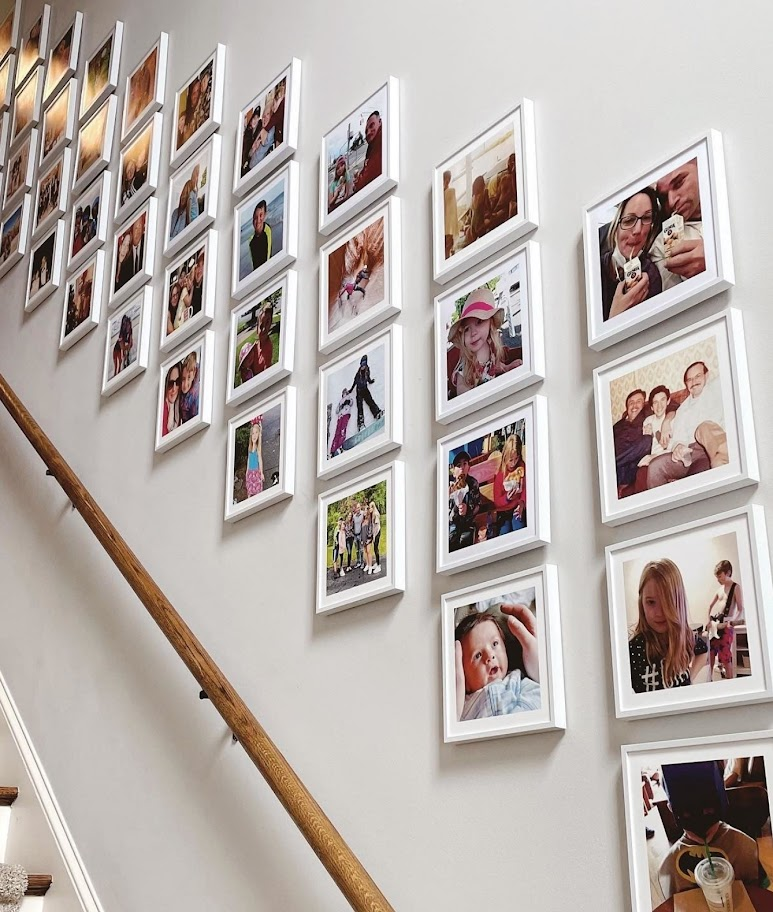Shop Canvas Prints Like a Pro: The Ultimate Guide to Choosing Perfect Wall Art for Your Home

Walking into a room with thoughtfully chosen wall art creates an immediate sense of polish and personality.
Understanding Canvas Print Quality: What Separates Good from Great
Many homeowners feel a sense of overwhelm when they decide to shop canvas print options, unsure of where to begin. Achieving a beautiful, curated look does not require a designer’s budget or years of experience. The secret lies in understanding a few key principles that guide decorators in making smart choices that enhance a home for years to come.
Many people have experienced the disappointment of unboxing a new canvas print only to find it looks nothing like the image they fell in love with online. This often comes down to not recognizing the quality markers that separate a beautiful, lasting piece from one that might fade or warp within months.
Canvas Material and Texture: Beyond the Surface
The canvas itself significantly impacts how art looks and endures. Cotton canvas is the material of choice for most professional artists because it holds color beautifully and resists yellowing over time, unlike cheaper synthetic blends. When shopping, look for descriptions that mention “100% cotton canvas” or “artist-grade canvas.”
Consider this common scenario: a gorgeous print is hung in a sunny room, only to develop a strange yellowish tint after six months. This is often the result of being printed on a cotton-poly blend that cannot withstand consistent light exposure.
Texture also plays a role. A slight texture gives a print an authentic, painted feel, while completely smooth surfaces can appear flat. Most quality canvas prints have what decorators call a “medium texture”—enough to catch light nicely without being so rough that it detracts from the image.
Print Resolution and Color Accuracy: Technical Aspects Made Simple
While technical jargon can be confusing, the basics are straightforward. For canvas prints, a resolution of at least 300 DPI (dots per inch) is recommended. This ensures the image remains crisp and clear, even when viewed up close. When using personal photos, it is crucial to select high-resolution files. A photo that looks great on a small phone screen may appear pixelated on a 16×20 canvas.
Color accuracy can be tricky to judge online, but printers using pigment-based inks typically offer better results than those using dye-based ones. Pigment inks are known for their longevity and resistance to fading. Many reputable canvas print companies will mention their ink type in product descriptions and may even offer color-matching guarantees.
Frame Construction and Durability: Investment Protection
A canvas print is only as good as the frame supporting it. Quality stretcher bars—the wooden frame behind the canvas—should be at least 1.5 inches thick for smaller prints and 2 inches for anything larger than 16×20. This depth prevents warping and gives the print a substantial, professional appearance.
It’s also wise to check how the corners are joined. While stapled corners are adequate for smaller prints, larger pieces benefit from proper wood joints for added stability. The canvas should be stretched tautly, without sagging or rippling, but not so tight that it risks tearing.
Mastering Size and Scale: Getting Proportions Right Every Time
A common decorating mistake is choosing art that is improperly sized for the space. A tiny 8×10 print can look lost on a massive living room wall, while an oversized piece can overwhelm a cozy bedroom corner. Getting the size right is crucial for creating a space that feels intentional and balanced.
The Golden Ratio Rule for Wall Art Placement
Here is a simple rule that works in almost any setting: wall art should occupy about 60-75% of the wall space above a piece of furniture. For a 6-foot sofa, the art—whether a single large piece or a gallery wall—should span roughly 4 to 4.5 feet horizontally.
For height, the center of the artwork should hang at eye level, which is typically 57-60 inches from the floor. When hanging art above furniture, leaving 6-8 inches of space between the top of the furniture and the bottom of the art creates a pleasing visual connection without making the area feel cramped.
Room-Specific Sizing Guidelines: From Bedrooms to Living Rooms
Different rooms call for different approaches. In bedrooms, slightly smaller pieces often work better to create a more intimate, restful feeling. A 16×20 or 20×24 print above a queen-sized bed, for example, has presence without being overpowering.
Living rooms, on the other hand, can handle larger statement pieces. For a spacious wall, a bold 30×40 canvas can serve as a stunning focal point. A well-chosen 36×48 landscape, for instance, can completely elevate a living room from bland to breathtaking, provided the furniture arrangement supports it.
Hallways and entryways are well-suited for vertical pieces or a series of smaller prints. The key is to consider how people will experience the space—whether they will be walking by quickly or stopping to admire the art.
Creating Gallery Walls: Multi-Piece Coordination Strategies
Gallery walls can seem tricky, but the effort is well worth it when done right. A helpful starting point is to cut paper templates of the planned pieces and arrange them on the wall with painter’s tape. This allows for experimentation without committing to nail holes.
For gallery walls featuring multiple canvas prints, it is best to stick to similar frame depths so that all the pieces sit at the same level. Mixing sizes adds visual interest, but maintaining a common element—such as a shared color palette or orientation—helps unify the arrangement.
Consistent spacing is also important, with 2-3 inches between pieces being a standard guideline. Remember, gallery walls do not have to be perfectly symmetrical. Sometimes the most interesting arrangements have a slightly organic, collected-over-time feel.
Choosing Images That Work: From Personal Photos to Professional Art
The chosen image can make or break a canvas print, regardless of its technical quality. Even the most stunning printing and framing can be wasted on a poorly chosen image, while a simple photograph can become a powerful piece of art when selected thoughtfully.
Personal Photography: Making Your Memories Wall-Worthy
Personal photos can make for the most meaningful wall art, but not every snapshot is suitable for canvas. Look for images with strong composition, good lighting, and emotional resonance. A blurry concert photo might hold precious memories, but it will not translate well into a large-scale print.
Landscapes and nature shots often work beautifully as canvas prints because of their natural texture and depth. A photo from a memorable hiking trip, for instance, can become a stunning 24×36 canvas that draws compliments from visitors, especially if the shot has good contrast and interesting foreground elements.
For family photos, consider converting them to black and white. This often lends a more sophisticated, timeless look that will not clash with a room’s color scheme.
Stock Art vs. Original Pieces: Navigating Your Options
There is nothing wrong with using stock photography or digital art for canvas prints—the key is to choose wisely. Avoid images that look overly generic or staged.
Instead, look for artistic photography, abstract designs, or illustrations that have the feel of original art. Many online resources offer beautiful options that are well-suited for canvas printing. A minimalist botanical illustration, for example, can hang in a guest room and look like an original piece.
If choosing text-based art, ensure the typography is clean and readable at the intended print size. What looks clear on a computer screen might be difficult to read from across the room.
Color Coordination with Existing Decor: Harmony Without Boredom
A canvas print does not need to match the throw pillows exactly, but it should harmonize with the room’s existing color scheme. A useful technique is to pull one or two colors from the room’s decor and look for art that incorporates those tones while introducing something new.
Consider the desired mood. Cool blues and greens are calming, making them ideal for bedrooms and bathrooms. Warm oranges and reds can energize a space, perfect for dining rooms or home offices. Neutral tones like grays, beiges, and soft whites work almost anywhere and allow for easy updates to other decor elements.
Finally, do not forget the emotional impact of the art. Abstract pieces can feel sophisticated and calming, while bold graphics might energize a space. Nature scenes often bring a sense of peace and connection to the outdoors.
Budget-Smart Shopping: Getting Premium Results Without Premium Prices
Decorating on a budget is a common goal, and quality canvas prints can seem like a significant investment. However, several strategies can help homeowners achieve beautiful results without overspending.
Timing Your Purchase: Sales Cycles and Best Deals
Canvas print companies often follow predictable sale cycles. The best deals can typically be found around major holidays like Memorial Day, Labor Day, and Black Friday. Many online retailers also offer significant discounts for first-time customers, making it worthwhile to spread multiple purchases across different sites.
Subscribing to email lists from favorite print companies is another smart move, as they often send exclusive discount codes to their subscribers. It is possible to save 30-40% on a purchase simply by waiting for the right sale.
End-of-season sales are also great for seasonal art. A beach scene might be cheaper in September, and winter landscapes often go on sale in March. For those not in a hurry, patience can lead to serious savings.
DIY vs. Professional Printing: When to Choose Each
For simple prints without complex color needs, local print shops can be a budget-friendly option. Many office supply stores and warehouse clubs now offer canvas printing services at competitive prices, which can work well for straightforward family photos and simple designs.
However, professional online services usually offer better quality control, more size options, and superior materials. For a statement piece or a particularly meaningful image, the extra cost is often justified by the peace of mind and quality assurance.
It is important to consider the total cost, not just the printing fee. Some budget services charge extra for stretching, framing, or shipping, which can add up quickly. Always check the final price before placing an order.
Long-term Value: Cost Per Year of Enjoyment
A helpful way to assess value is to consider the cost per year of enjoyment. A $200 canvas print that is loved for a decade costs just $20 per year. When compared to a $50 print that feels tired after six months, the more expensive option often proves to be the better long-term value.
Quality prints also hold up better over time. Well-made canvas prints can look as good as new for years, while cheaper alternatives may fade or warp. Investing in quality materials and printing ensures that the art will continue to enhance the space for a long time.
Installation and Placement Strategies: Professional Results at Home
Even the most beautiful canvas print can look amateurish if it is poorly installed. These proven techniques help achieve that polished, professional look without needing to hire a professional.
Wall Preparation and Hanging Hardware: The Foundation of Success
Before hanging a canvas, it is essential to assess the wall. Drywall anchors are necessary for any piece larger than 16×20 or heavier than 10 pounds. For maximum security, toggle bolts or molly bolts are excellent choices as they distribute weight more effectively than simple plastic anchors.
For very large pieces, locating wall studs is the safest approach. A stud finder is a worthwhile investment for anyone planning to hang multiple heavy items. Once found, stud locations can be marked lightly with a pencil.
Finally, cleaning the wall before installation is a small but important step. Dust and dirt can interfere with adhesive strips or make the art look dingy once hung.






